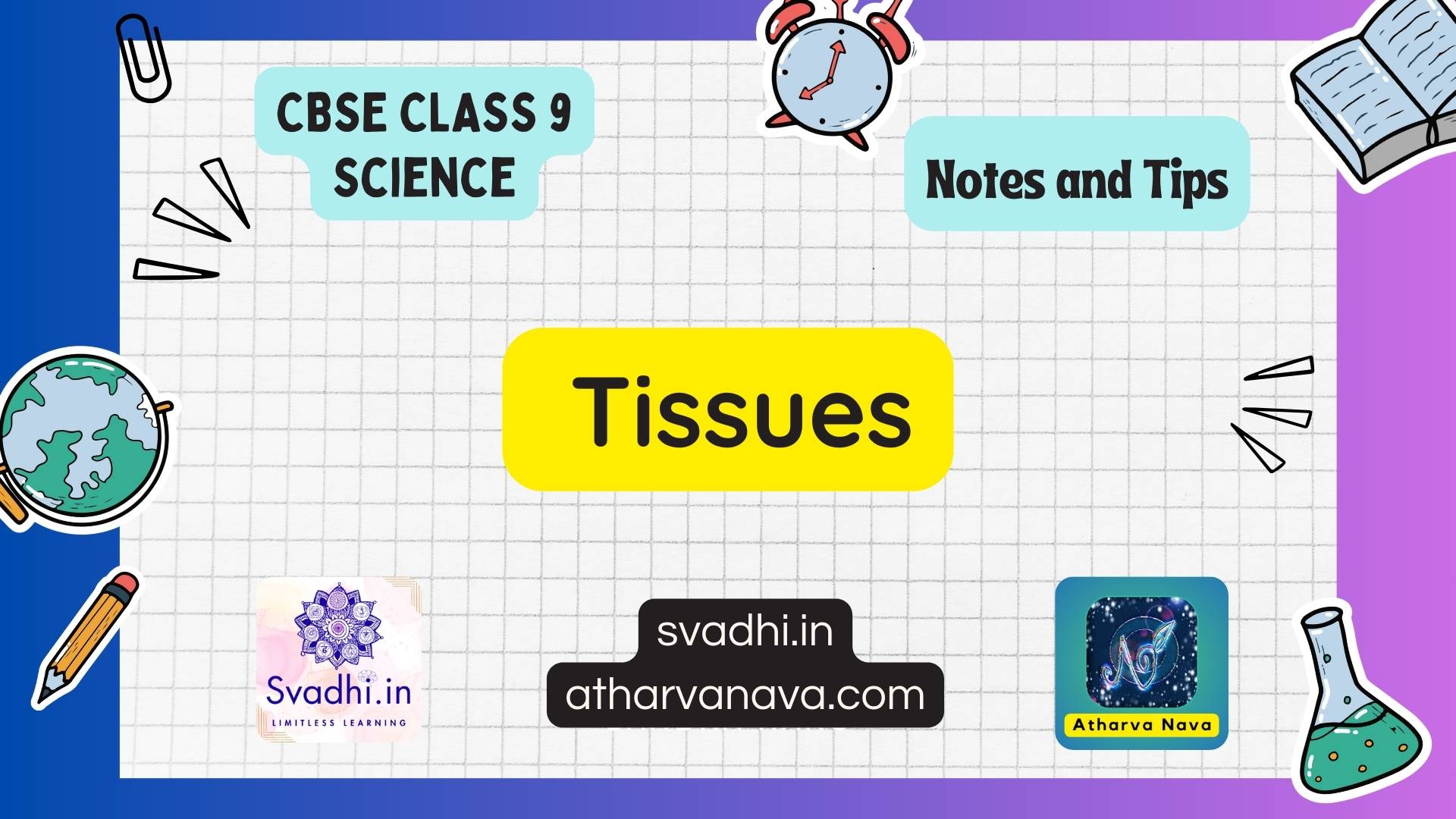A group of cells that are similar in structure and/or work together to achieve a particular function forms a tissue.
Plant Tissues
Meristematic Tissue
(Immature cells capable of divisions)
- ➥ Apical Meristem (Present at the growing tips of stems and roots responsible for increase in length)
- ➥ Intercalary Meristem (Present at the bone of internodal regions, responsible for secondary growth)
- ➥ Lateral Meristem (Present in lateral regions, responsible for increase in width of the plant)
Permanent Tissue
(Mature cells incapable of divisions)
- Simple (Made up of only one type of cells)
- ➥ Parenchyma (Living tissue stores and condusts food, water and minerals)
- ➥ Collenchyma (Living tissue provides strength and flexibility to growing part of the plant)
- ➥ Sclerenchyma (Dead tissue, provides mechanical support)
- Complex (Protecting and supporting)
| ➥ Xylem | ➥ Phloem |
| (Conducts water and mineral from the root to the steam and leaves) | (Transport food from the leaves to the other parts) |
| Tracheids (Elongated tube like with thick lignified walls) | Sieve tube elements (Long, tube like, arranged longituinally) |
| Vessels (Long cylindrical with lignified walls) | Companion cells (Specialised parenchyma) |
| Fibres (Highly thickned walls) | Phloem parenchyma (Long cylinrical, stores food) |
| Xylem parenchyma (Living cells, thin walled) | Phloem fibre (Made of sclerenchyma, thick cell wall) |
Animal Tissues
| Epithelial tissue | Muscular tissue | Connective tissue | Nervous tissue |
| (Protective tissue) | (Responsible for movements in body) | (Linking and supporting tissues or organs of body) | (Receives, conduct and transist electrical impulse, made up of nervous or nerve cells) |
| Glandular (specialised tissue) | Voluntary muscle | Bone (strong, non-flexible tissue compound of bone cells and hard matrix of calcium and phosphorus) | |
| Salivary gland | (Activities under the control of nervous system) or Skeletal muscle | ||
| Unilayer | |||
| Multilayer | Involuntary muscle | Ligament(Elastic tissue with little matrix, connect bone to bone) | |
| Stratified squamous epithelium | (Responsible for involuntary movement in body) | Tendous (Fibrous tissue with great strength and limited flexibility – connect muscle to bone) | |
| Squamous (Thin and flat forming living of blood vessels, alveoli, mouth and Oesophagus) | Cardiac Muscle(Cylindrical, branched, uninucleate and straited) | Cartilage (Alidely spaced cells, smoothens bone surface at joints) | |
| Cuboidal (Cube shaped, form livings of renal tubule and duct of salivary glands where it provides mechanical support) | Smooth/unstriated muscles or Visceral Muscle (Located in the inner wall of hollow visceral organs like alimentary canal, etc.) | Areolar connective Tissue (Found between skin and muscle around blood vessels and nerves and in bone marrow) | |
| Columnar (Pillar like) | |||
| Non-ciliated (Tall cells in inner linings of stomach and intestine) | |||
| Ciliated columnar epithelium (Tall epithelial cells with hair like projections, present in inner lining of respiratory tract) |

Comments are closed